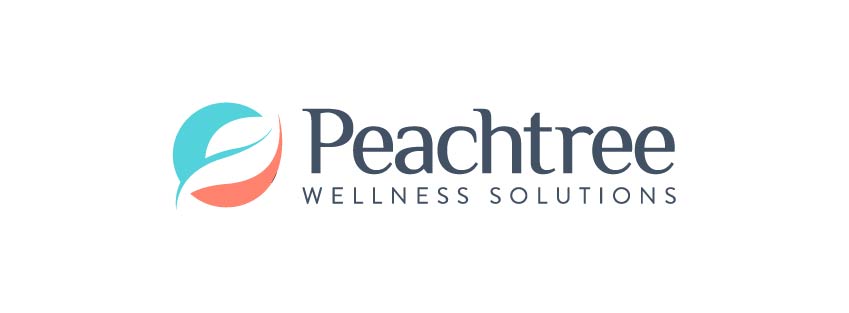What Is a 1013 In Mental Health?
When someone is having mental health issues, regardless of whether they are being treated for their condition or not, they can sometimes experience a crisis or mental health emergency. When this occurs, it is vital to have access to the mental health care and services one needs.
In Georgia, the process used during a mental health crisis or emergency is referred to as a 1013. At Peachtree Wellness Solutions in Atlanta, we are an approved facility once someone has been released from a 1013 and are here to help individuals day or night.
If you or a loved one are struggling with a mental health disorder, our residential mental treatment in Georgia can help. Call us now at 770-202-1274 and our team can help you right away.
Request a Confidential Callback
What Is a 1013 in Mental Health?
A 1013 in mental health is an involuntary commitment form used in the state of Georgia as a legal procedure that allows the temporary detainment individuals in a mental health crisis who pose a danger to themselves. A 1013 is usually initiated when someone presents an immediate risk from severe mental health disorder symptoms or suicidal ideation.
A 1013 form is typically completed by a licensed physician, psychologist, clinical social worker, or other qualified mental health professional.
Georgia Mental Health Statistics
Some mental health statistics for Georgia, as reported by NAMI, show how serious mental health issues are in the state, as follows:
- 1,405,000 adults have a mental health condition.
- 44.3 percent of adults reported symptoms of anxiety or depression in February 2021.
- 336,000 adults have a serious mental illness.
- 104,000 youths between the ages of 12 and 17 have depression.
- 1 in 6 homeless people live with a serious mental illness.
- 1,569 people committed suicide in 2021.
- 314,00 adults had thoughts of self-harm and suicide in 2021.
What is the Purpose of a 1013 Form?
The purpose of a 1013 form is to ensure the safety and well-being of the individual experiencing the mental health crisis, as well as those around them. A 1013 provides access to the necessary mental health support needed during this critical period.
Recommended: 1013 Form
What Happens Once a 1013 Form Has Been Submitted?
Once a 1013 form has been submitted, it starts a 72-hour clock where several steps must be completed within this time to address the individual’s mental health needs and generally includes:
- Transportation: The individual is transported to the designated mental health treatment facility.
- Initial Assessment: Upon arrival at the facility, mental health professionals will evaluate the individual and the crisis level. They are also informed of their legal rights at this time.
- Admission and Crisis Stabilization: If the person is deemed a harm to themselves or others, they are admitted and their current condition stabilized.
- Evaluation: During the 72-hour period, a thorough evaluation is conducted to determine if futher treatment is necessary.
- Treatment Planning: After being stabilized and based on the initial assessment, a personalized treatment plan is created.
- Discharge or Transition: If the person is no longer a threat to themselves or others, they can change their status to voluntary and request to be discharged. However, they may also decide to transition into a treatment program, either voluntarily or involuntarily, if they are still a danger to themselves and others.
What Can I Expect From a 1013?
Even though you are being involuntarily admitted to a mental health facility for evaluation, monitoring, and treatment, there are a few things you can expect as follows:
- Dignity and Respect: Mental health and healthcare professionals have a duty of care to provide you with dignity and respect.
- Confidentiality: Regardless of the involuntary nature of your situation, you are entitled to privacy as you would expect from any other healthcare provider and have certain protections under HIPAA.
- Your Well-Being Is a Priority: The objective of a 1013 is to ensure you receive the care you need in a safe, secure, caring, compassionate, and supportive environment.
- Collaborative Approach: You are encouraged to participate in developing your treatment plan to ensure it meets your needs as well as provides the mental health services you require.
What Happens Once A 1013 Has Been Completed?
Once a 1013 hold expires, the process involves several steps to ensure the appropriate actions are taken, including:
- Re-evaluation and Review: The individual’s condition is re-evaluated near the end of their involuntary hold period to determine if continued treatment is necessary or if they can be discharged.
- Comprehensive Treatment: If ongoing treatment is deemed necessary, comprehensive treatment following the treatment plan will continue in a residential mental health treatment setting. Inpatient treatment provides a highly structured program with round-the-clock monitoring and support.
- Transition to a Lower Level of Care: Based on the re-evaluation results, sometimes a person does not need to remain in residential care but still needs treatment. In this case, they are transitioned to a lower level of care, such as a partial hospitalization program (PHP) or intensive outpatient program (IOP).
Benefits of Treatment After a 1013
There are several potential benefits to receiving ongoing mental health treatment after a 1013 hold:
- Continued Support: Treatment can provide a safe and supportive environment where individuals can explore their thoughts, emotions, and behaviors while receiving professional assistance.
- Stability and Recovery: Regular treatment sessions can help individuals maintain stability in their mental health by addressing underlying issues, managing symptoms effectively, and developing coping strategies to prevent relapse.
- Relapse Prevention: Following a crisis, there is a higher risk of relapse of symptoms if proper support is not continued. Ongoing mental health treatment helps reduce this risk by equipping individuals with the tools they need to manage their condition effectively.
- Improved Quality of Life: Continued treatment improves quality of life by helping individuals gain insight into their condition and develop healthier habits for improved mental health.
- Access to Resources: Individuals can access a range of resources while in treatment and when transitioning to aftercare to help them establish a strong support network.
How Mental Health Treatment in Georgia Works
Mental health treatment at Peachtree Wellness Solutions begins with a comprehensive assessment to develop a personalized care and treatment plan that can include:
- Individual Therapy
- Group Therapy
- Family Therapy
- Medication-Assisted Treatment
- Music Therapy
- Pet Therapy
- Holistic Therapy
- Red Light Therapy
- Biosound Therapy
- Aftercare Planning
Our team works collaboratively with each individual to develop a treatment plan that addresses their mental health needs to provide the level of care they need for improved mental well-being.
How to Get My Loved One Help
If your loved one is experiencing a mental health crisis or emergency where you believe they may harm themselves or others, you should call the Georgia Crisis and Access line at 800-715-4225 or 911 immediately. A 1013 can be used to ensure they get the mental health services and care they require regardless of their ability to pay.
If their condition is more stable but still requires treatment, Peachtree Wellness Solutions is here to help. You can contact us directly to obtain advice, educational resources, and other beneficial information on how to help your loved one and ensure they get the care they need.
Compassionate Residential Mental Health Treatment in Atlanta
Your mental health matters, and you are not alone when you need help. At Peachtree Wellness Solutions, our dedicated, compassionate team is ready to provide the support and care you deserve. Contact us today to learn more about our services and how we can help you start healing and recover from mental health issues.
If You are in need of immediate assistance...
Contact us immediately. In the case of a medical emergency, contact 911 or visit your local emergency department.
We Work With Most Insurance
Most major health insurance plans with out-of-network benefits can cover the costs associated with our program. Find out your coverage options right now.







